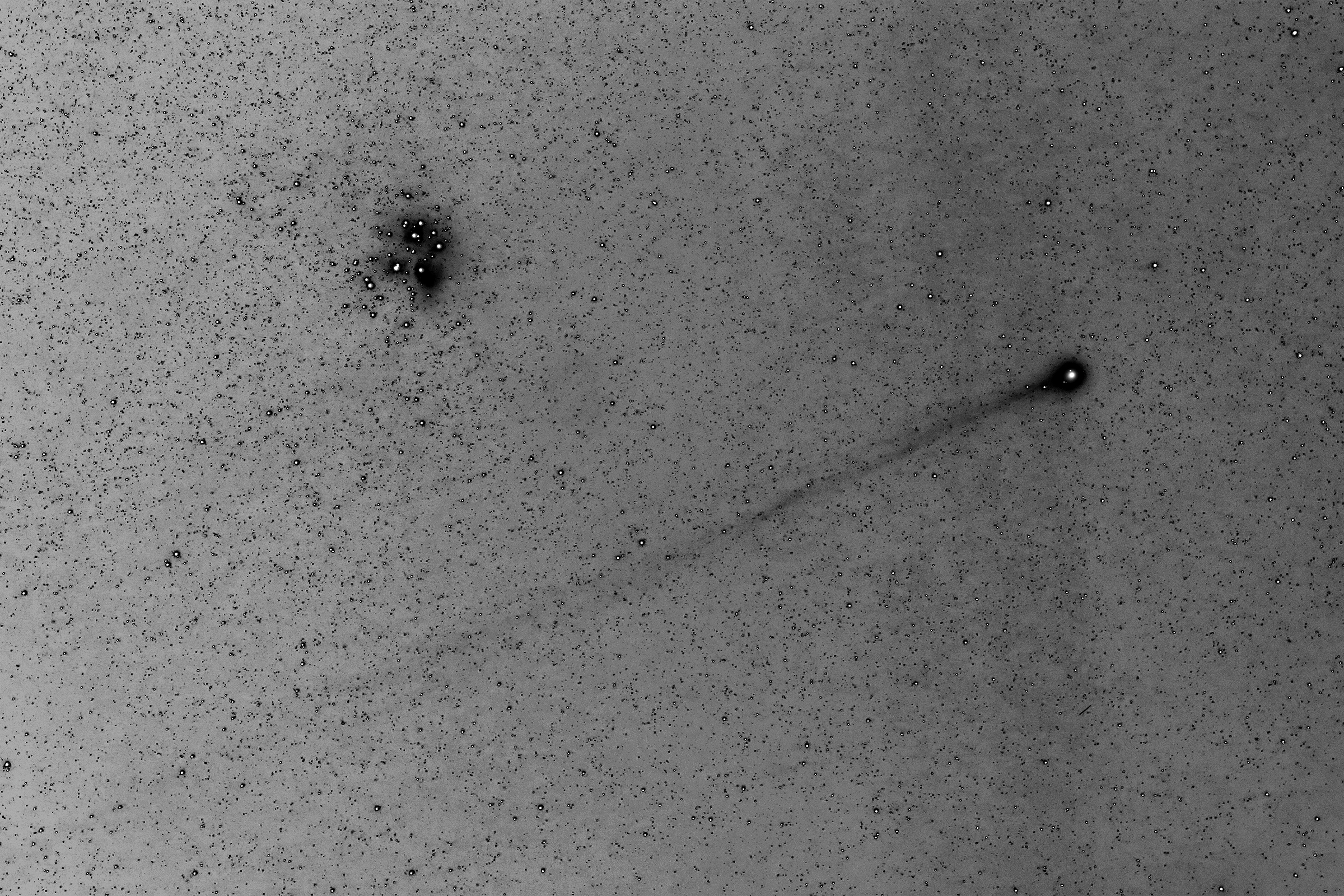Comet Lovejoy has been gracing the night skies for several months. As it travels north-ish across the background of stars, it's been getting higher in the sky for us in the northern hemisphere. It also recently completed perihelion (the point in its orbit when it's closest to the Sun) and its closest approach to Earth. These have all come together to make a pretty impressive showing for this comet discovered just last year.
As comets get closer to rounding the Sun, they typically get brighter. That's because the Sun heats up the comet's body, causing material on the comet to sublimate, which produces gas vents and loosens debris. The gas and other material fly off the comet body, which is what makes a comet "fuzzy" and usually produces a noticeable tail.
It's often mistakenly believed that a comet's tail indicates its direction of travel. When airplanes leave contrails or rockets take off leaving a stream of exhaust, we naturally understand that the trailing tail indicates the direction the object is traveling. (If the rocket's exhaust is trailing in one direction, the rocket must be traveling in the opposite direction.) This is not necessarily the case with comets. There is no air in space to interact with a comet's tail. It streams away from the comet's head because of solar radiation, i.e., the solar wind, which is not really a "wind" as we know it. It's a stream of charged particles that constantly shoot off in all directions from the Sun. In this image, the comet (officially known as C2014/Q2 Lovejoy) is moving toward the 4 o'clock position, nearly perpendicular to the tail.
This desaturated and inverted image shows the extent of the comet's tail. The star cluster is the Pleiades.
As comets get closer to rounding the Sun, they typically get brighter. That's because the Sun heats up the comet's body, causing material on the comet to sublimate, which produces gas vents and loosens debris. The gas and other material fly off the comet body, which is what makes a comet "fuzzy" and usually produces a noticeable tail.
It's often mistakenly believed that a comet's tail indicates its direction of travel. When airplanes leave contrails or rockets take off leaving a stream of exhaust, we naturally understand that the trailing tail indicates the direction the object is traveling. (If the rocket's exhaust is trailing in one direction, the rocket must be traveling in the opposite direction.) This is not necessarily the case with comets. There is no air in space to interact with a comet's tail. It streams away from the comet's head because of solar radiation, i.e., the solar wind, which is not really a "wind" as we know it. It's a stream of charged particles that constantly shoot off in all directions from the Sun. In this image, the comet (officially known as C2014/Q2 Lovejoy) is moving toward the 4 o'clock position, nearly perpendicular to the tail.
 |
| Comet C2014/Q2 Lovejoy AGO 10" f/3.9 Newtonian and FLI ML11002-C Single 2-minute exposure |
 |
| Canon EOS 6D, Rokinon 85mm f/1.4 lens at f/2.5. 30 seconds. ISO2000. Tracked using a Losmandy Starlapse. |
Comments
Post a Comment